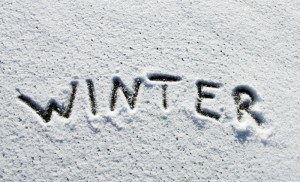As the temperatures drop outside, people come indoors to work, play, and spend time with friends and family. Oftentimes during the winter, this time is spent in front of a fireplace enjoying its warmth and ambiance. Unfortunately, what some homeowners fail to realize is that winter weather can have a negative impact on your chimney over time.
While winter means the coming of the festive holiday season, it also brings frigid temperatures, freezing rain, ice, and snow. Because the winter is typically the heaviest use season for fireplaces, it is important to have an annual sweep and inspection done as early as possible to ensure that your heating appliance is working efficiently, has not been damaged, and is safe to use all winter long.
How water damages chimneys
One of the most common – and most preventable – ways that chimneys are damaged is through long term exposure to moisture. Water can wreak havoc on a chimney and fireplace system, affecting everything from the bricks and mortar to the flue and damper.
While chimneys may appear to be simple structures, they are actually surprisingly complex. Because of this, finding the exact cause of water entry may be difficult. Here are two common ways that water enters a chimney.
Chimney cap: A chimney cap, sometimes known as a rain guard, covers the top portion of the chimney. This allows smoke out while keeping sparks and embers in. If damaged, water, debris, and even animals can get into the chimney.
Masonry damage: The bricks and mortar of a chimney are constantly exposed to the elements. Because of this, absorbed water constantly freezes and thaws, creating cracks that allow more water to enter. Over time, the freeze-thaw process can cause major damage to the chimney as bricks crack and crumble.
Preventing water damage
Although it is inevitable that chimneys are exposed to water from rain, ice, and snow, there are steps that homeowners can take to prevent and minimize water damage. Preventative maintenance is the most effective way of preventing water damage. During an annual sweep and inspection, a trained technician will inspect the chimney for any signs of damage to the masonry, chimney cap, or other parts of the chimney. When spotted early, many minor problems can be fixed before they turn into major concerns, saving both time and money.
In addition, the trained technicians at Jack Pixley Sweeps can apply a variety of protective sealants to existing masonry structures to prevent water from seeping in. These professional grade products can provide as much as ten times the water prevention of standard brands. These sealants can greatly extend the life of your chimney and prevent any existing damage from getting worse.
Animal entry
Just as people tend to stay inside more during the winter, birds and other small mammals seek shelter as the temperatures turn cold. Because of this, uncapped chimneys or those with un-repaired openings often become hiding places for wildlife. In order to continue safely using your fireplace, it is important to have the animals safely removed as quickly as possible. Following removal, repairs can be made to make sure the animals cannot reenter the chimney structure.
If you have questions about preparing your chimney for winter, contact the experts at Jack Pixley Sweeps today!

